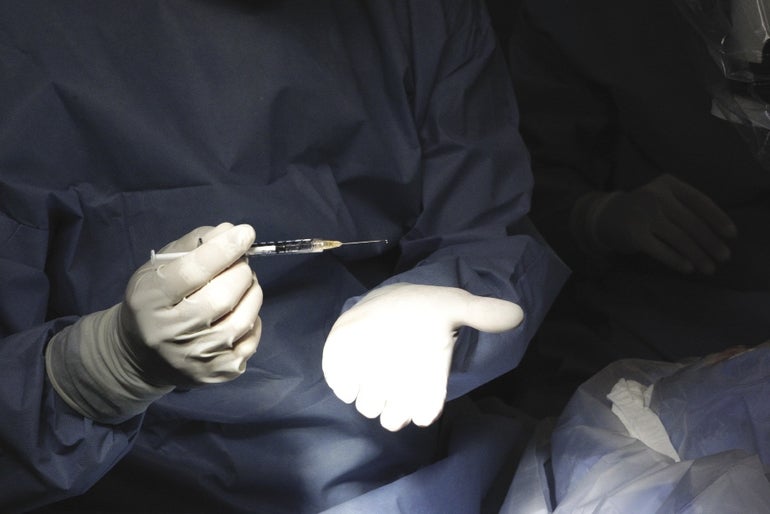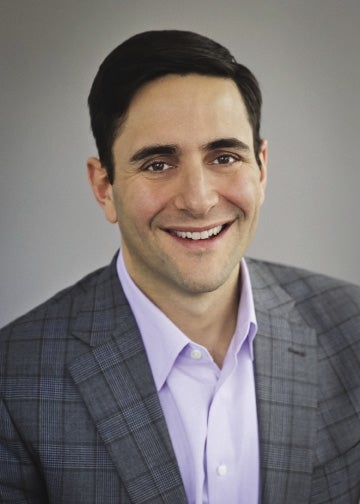Advanced Cell points toward tomorrow
On the surface, Marlborough biotechnology company Advanced Cell Technology appears to be on a rocky road, with leadership changes and scuffles with the U.S. Securities and Exchange Commission (SEC) having created negative press in recent months.
But the best days may lie ahead for Advanced Cell (ACT). It's shown significant progress in developing embryonic stem cell treatment for diseases that cause blindness, and sources within and outside the company say it could become the first to bring an embryonic stem cell treatment to market.
One of those Advanced Cell believers is Raymond Page, an assistant professor of biomedical engineering at Worcester Polytechnic Institute (WPI) who is developing technology that cultivates a large number of adult stem cells outside the body to be used for tissue regeneration.
Page said it's “very likely” that Advanced Cell, still a clinical-stage company, will be the first to commercialize an embryonic stem cell treatment. He hopes that will open new doors for other researchers and firms pursuing similar technology for other applications.
“Any incremental success in the field of cell-based therapeutics is going to be a success for the whole field,” Page said.
This kind of scientific work generated a lot of hype during the presidential administration of George W. Bush, who imposed a ban on federal funding for embryonic stem cell research. It was lifted by President Obama in 2009, but the industry has had little success to date in developing viable treatments using the technology.
That's why the results Advanced Cell has shown in its human clinical trials are noteworthy. It became the first company to have results of embryonic stem cell treatment trials published in a medical journal, in 2012.
The Lancet, a prominent British medical journal, reported that two women suffering from diseases that cause macular degeneration (which leads to blindness) were successfully treated with Advanced Cell's stem cell injections. The patients, notably, did not suffer adverse impacts from the injections, which run the risk of creating an immune response in the patient. Both women showed slight improvement in their vision.
Advanced Cell is planning to move ahead this year with a new round of advanced clinical trials for treatments for two diseases that cause vision loss, including age-related macular degeneration, the leading cause of blindness in people 65 and older, and Stargardt disease, a genetic condition that causes progressive vision loss.
The MIT Technology Review reported on April 16 that these treatments “have the potential to become the first therapy based on embryonic stem cells.” The story cited results released by Advanced Cell in May 2013 that showed one patient, deemed legally blind, recovered his vision after receiving treatment.
But Edward Myles, interim president at Advanced Cell, said the company has tried to be conservative about releasing results, choosing instead to hold the cards close until a reputable, peer-reviewed academic journal is able to publish them.
A rough turn
Good press in a peer-reviewed academic journal would be another positive development for a company that's recently gone through a period of transition. In January, ACT agreed to pay $4.1 million over a period of 18 months to settle claims by the SEC that it sold billions of shares of unregistered penny stocks between 2008 and 2009 under former CEO William Caldwell IV.
Caldwell died in 2010 and was succeeded by Gary Rabin. But in January, Advanced Cell announced Rabin's departure after he allegedly failed to report 27 transactions in which he sold his shares of company stock between 2011 and 2013. This prompted a separate SEC investigation.
Meanwhile, Advanced Cell incurred a $29.7-million operating loss in 2013. And revenue — generated mostly by licensing fees — dropped to $224,985, compared to $466,487 in 2012.
Myles, who joined Advanced Cell in May 2013 as chief financial officer and executive vice president of corporate development, was named interim president as the board of directors searches for a new CEO.
“We believe we're emerging from some of those past decisions and underneath it all is a really exciting asset,” Myles said.
One factor that Myles believed led some previous executives to make poor decisions was the company's choice to “plow ahead” on developing embryonic stem cell treatments, even though it hasn't been easy to obtain funding.
The persistence in pursuing the technology, Myles said, is owed primarily to Dr. Robert Lanza, Advanced Cell's chief scientific officer, who has been plugging away at designing an effective embryonic stem cell treatment since he joined the company in 1999.
The mechanism
Advanced Cell developed its clinical stage treatment for macular degeneration using retinal pigment epithelium (RPE) cells grown from embryonic stem cells. The cells are injected under a patient's retina to repair vision loss caused by degeneration of the RPE layer, by bringing dormant photoreceptors back into activity.
Myles said treating macular degeneration works well compared to other applications, because a relatively low number of stem cells are needed, and the eye is less likely to have an adverse response to stem cell treatment than other areas of the body.
Page, the WPI professor, can speak to the early days of Advanced Cell. He worked for the company for about a year-and-a-half back in the early 2000s. At that time, the company had not determined what type of disease it would aim to treat using embryonic stem cells.
Since then, Advanced Cell tested several applications, and macular degeneration was the one that was successful, according to Page. Meanwhile, Page said he's unaware of any other companies that are conducting clinical trials on embryonic stem cell treatments, as many have abandoned programs after struggling to be successful. And he's not sure exactly why Advanced Cell is the last one standing.
“Maybe just pure persistence, maybe luck,” Page said.
Persistence is part of the equation, said Brock Reeve, executive director of the Harvard Stem Cell Institute in Cambridge. But the process of understanding how to develop stem cells and make them work in treatments is what lies at the heart of a successful company in this industry. The question, according to Reeve, is, “How do we know what are the right dials to turn?”
To that end, companies must rely on the industry's cumulative knowledge. Reeve, who has a background in the commercial biotech industry, said what ACT has achieved in developing its treatment is unique (though other companies are exploring treatments for eye diseases using other types of stem cells) and should be viewed as a win for the industry as a whole.
Though Advanced Cell's treatment is still likely years away from market, the company is already planning for growth.
With 40 employees in Marlborough now, Myles said there may be more as Advanced Cell pursues Phase 2 clinical trials. He's also building up the company's clinical team, as ACT shifts from its status as a research company to a “clinical-stage ophthalmology company,” Myles said. n
















0 Comments